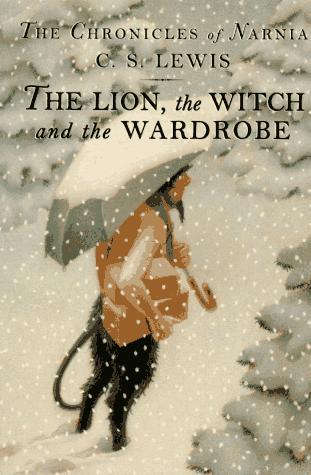
Lucy and her siblings will be heralded as saviors or deliverers, destined to, alongside the mighty Aslan, pull Narnia from its eternal winter.

This biblical reference points to humans as divine creations in God’s image, and their fated destiny to rule Narnia above all of the other magical creatures who live there is in a way a divine right.

Tumnus also notably refers to Lucy as a “Daughter of Eve”-the way Narnians refer to humans is Daughters of Eve for women, and Sons of Adam for men. This withholding of Christmas-the holiday commemorating the birth of Christ-is implied to be a purposeful withholding of the celebration of Jesus.

However, Tumnus reveals to her that the world of Narnia is under siege: the White Witch has made it so that it “always winter and never Christmas” in Narnia. Tumnus carrying packages in his arms, believes Christmas must be near. This initially gives the world a quiet, still magic, and Lucy, seeing the Faun Mr. Lucy finds Narnia covered in snow her first time through the wardrobe. From Lucy’s first solo journey through the wardrobe to the world on the other side, there is the sense that Lewis has created a world that is in dire need of deliverance. The religious symbolism Lewis employs throughout the novel is pointed and ubiquitous.

In contrast, a world that embraces Christlike values-turning the other cheek, honoring promises, and making sacrifices for others-will be full, bountiful, and prosperous. Through the character of Aslan, and his role in Peter, Susan, Edmund, and Lucy’s story, Lewis created an allegory for the triumph of Christian ideology, and used The Lion, the Witch, and the Wardrobe to subtly suggest that a world that rejects Christianity will be a poorer one marked by strife, suffering, and a literal winter of the soul. Lewis, however, did not set out to write a biblical allegory rather, he wanted to imbue a fairy story with elements of the story of the Jesus Christ in order to allow children to see the miraculous elements of Christ’s story in a new light-and perhaps relate to them anew and understand their wonder more deeply. Lewis, a devout Christian, suffused his most famous work, The Lion, the Witch and the Wardrobe with overt Christian symbolism and structured its conclusion around the resurrection of a Christ figure and a climactic battle for the very soul of Narnia.


 0 kommentar(er)
0 kommentar(er)
